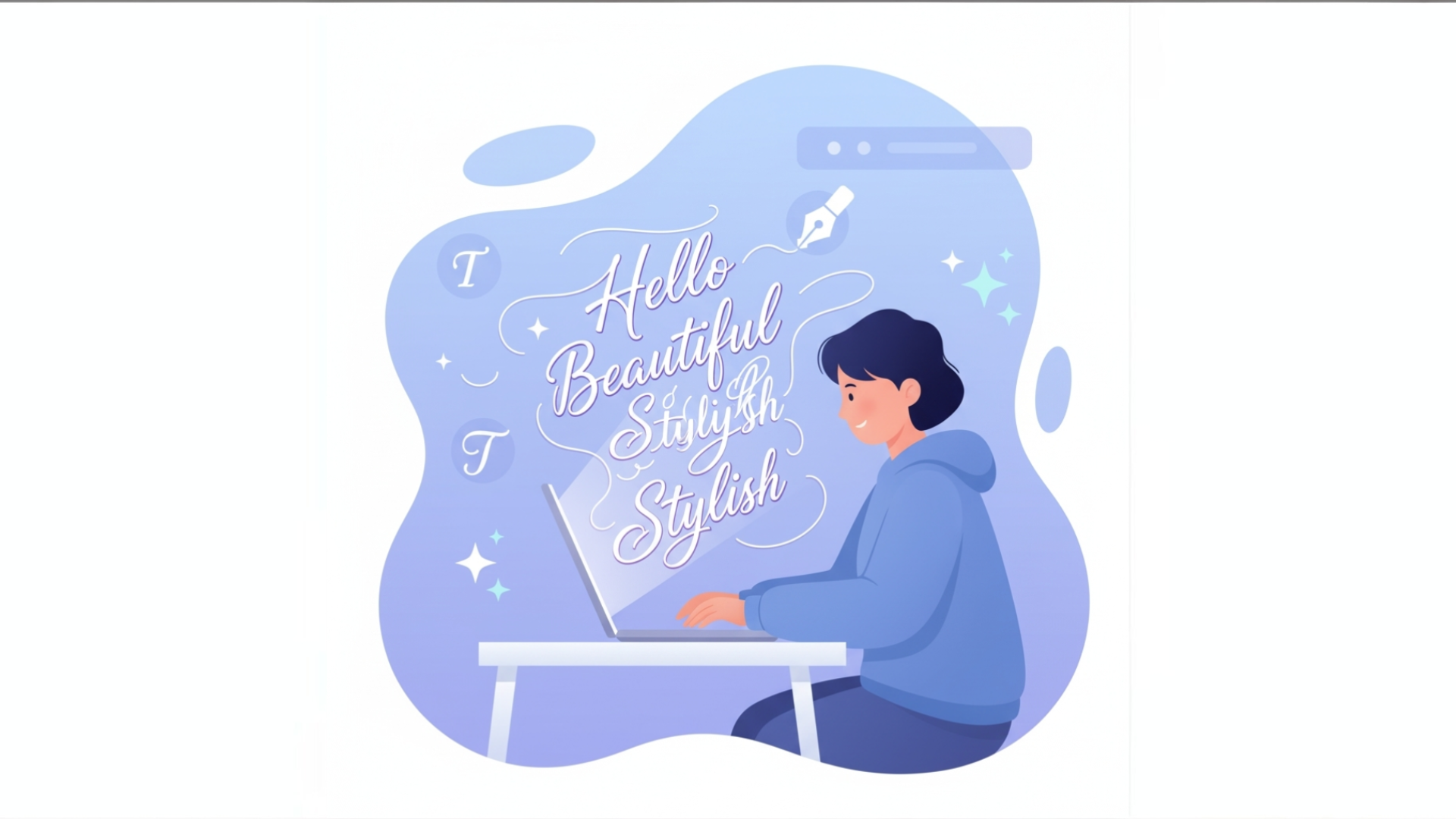
Cursive Text Generator
Created on 16 October, 2025 • Text Tools • 1 views • 2 minutes read
A Cursive Text Generator is a tool that transforms ordinary typed text into stylized, flowing, handwritten-like characters.
Cursive Text Generator: Create Elegant Handwritten-Style Text
A Cursive Text Generator is a tool that transforms ordinary typed text into stylized, flowing, handwritten-like characters. These tools are popular for social media bios, graphic design, captions, and digital art where a cursive or calligraphic look adds personality. This article explains how cursive generators work, common formats, best uses, and accessibility considerations.
What Is a Cursive Text Generator?
A cursive text generator converts plain text into stylized representations that resemble cursive handwriting. There are two common approaches: using Unicode characters that visually mimic cursive (mathematical script, italic, or bold-script characters) and rendering text with cursive fonts (web fonts or images). Unicode-based generators are convenient because the output is text you can copy and paste anywhere, while font-based solutions produce images or styled HTML that preserve a specific typeface.
Unicode vs. Font-based Cursive
Unicode cursive: Uses characters from Unicode blocks like Mathematical Alphanumeric Symbols (e.g., 𝓐, 𝓑) and other stylized glyphs. These characters behave like text — selectable, searchable, and copyable. However, not all systems or apps render every Unicode glyph consistently. Font-based cursive: Uses actual cursive fonts (e.g., Pacifico, Great Vibes) and is ideal for consistent branding and print-quality graphics, but typically requires embedding a font or exporting an image.
How Cursive Generators Work
At the core, most online cursive generators use a mapping table that links standard Latin characters to their cursive-style Unicode equivalents. When you type "Hello", the generator replaces each character with the mapped glyph (e.g., 𝐻𝑒𝓁𝓁𝑜) and returns a combined string. Font-based tools render the text using CSS or image rendering libraries and may apply additional effects like ligatures, swashes, and contextual alternates for a more natural handwritten look.
Advanced Features
- Ligature support to join letters smoothly where a font supports it.
- Stylistic alternates for variable letterforms to mimic real handwriting.
- Output options: plain Unicode text, HTML/CSS snippet, SVG or PNG image.
Common Use Cases
Cursive text generators are widely used by content creators, designers, and social media users. Typical applications include:
- Social bios and captions: Stand out with a decorative name or quote.
- Graphic design: Create logos, greeting cards, and posters with a handwritten feel.
- Personalization: Add a signature-like style to emails, invitations, and labels.
- Mockups: Show how cursive copy will look in UI, packaging, or print.
Best Practices and Accessibility
Readability and Compatibility
While cursive styles are attractive, they can reduce readability, especially at small sizes or for users with visual impairments. If using Unicode cursive characters, test across platforms because some glyphs may appear as boxes or fallbacks in older devices. For important content—like legal text, navigation, or form labels—avoid decorative cursive and keep plain text alternatives.
SEO and Copy/Paste Behavior
Unicode cursive text remains indexable by search engines but may affect keyword matching and user searches. Font-based cursive images are not searchable unless you provide alt text or an accessible HTML fallback. Consider including the original plain text in hidden or visible form for SEO and screen readers.
Categories
Popular posts
-
Reverse LettersText Tools • 4 views
-
IP LookupChecker Tools • 3 views
-
Reverse Ip LookupChecker Tools • 3 views
-
SSL LookupChecker Tools • 3 views
-
PingChecker Tools • 3 views